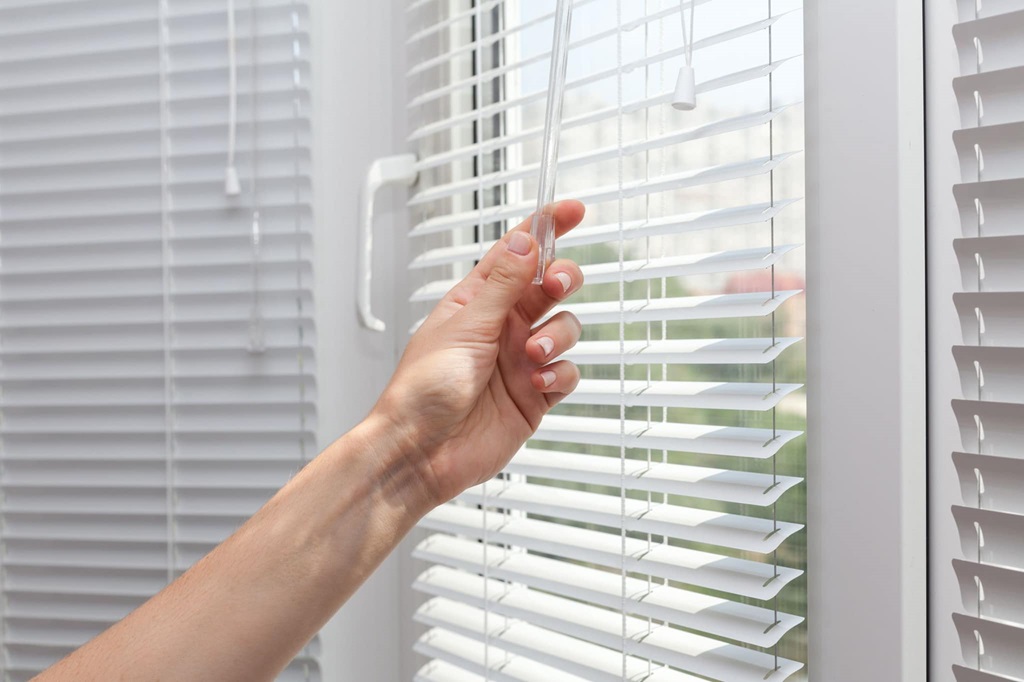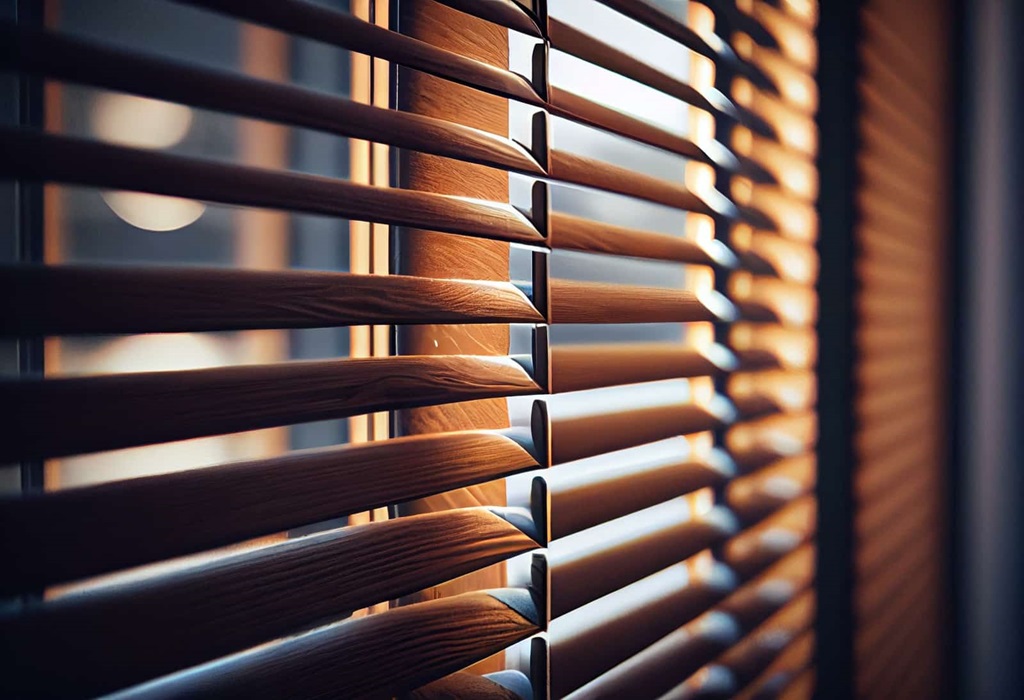Have you ever wondered if there’s a secret to closing your window blinds in a way that genuinely enhances their functionality? Look no further! In this engaging guide, we’ll unravel the simplicity behind this everyday task. From nifty tips to seamless tricks, we’ll walk you through the steps on how to close a window blind to close various window blinds effortlessly. Your windows are about to get a makeover, and you’re just a read away from mastering the art!
Understand the Different Parts of a Blind
Before diving into how to close different blind types, it’s helpful to understand the essential components. Most window blinds consist of:
- The headrail – The top portion that houses the mechanisms to raise, lower, and tilt the blinds.
- The slats – The horizontal or vertical panels that block the light. She is also called louvers or vanes.
- The bottom rail – A horizontal bar at the base to weigh down the slats.
- The cords/wands – Allows you to control the blinds and alter the angle of slats.
- The tilter – Adjusts the angle of the slats to control light filtration.
- The lift cords – Raises or lowers the entire set of blinds.
Knowing the function of each part will make the closing process smoother.
Step-by-Step Instructions to Close Different Blind Types

Blinds come in many styles – vinyl, faux wood, aluminum, cellular, vertical, Roman, and more. The steps to close them properly depend on the specific type. Here are tips for some of the most common varieties.
Horizontal Blinds
Horizontal blinds with slats that run sideways are probably the most ubiquitous. Follow these steps to close them:
- Grab the lift cord on one side of the blinds and gently pull down until the bottom rail is about 6 inches from the window sill.
- Move to the other side and pull the second lift cord until the bottom rail is fully down and the slats are stacked.
- If there are tilt cords, pull them to angle the slats up to overlap and block outside light.
- Gather slats in the center for wider blinds that fully cover the window. Adjust the side cords to keep them centered.
Vertical Blinds
Vertical blinds have longer slats that run up and down. Here’s how to close them:
- Find the main vertical pull cord on one side of the headrail. Pull gently downward.
- As you pull, the slats will start stacking on each other from side to side.
- When fully closed, the edges of the slats should overlap in the center of the window.
- Rotate the slats to a closed position using a wand for complete light blockage.
Cellular & Pleated Shades
Cellular and pleated shades work a bit differently from slat blinds. To close:
- Find the lift cord on the side of the shades and pull it down steadily to the window sill.
- Cellular shades close from top to bottom, while pleated shades close from bottom to top when closing.
- Keep pulling the cord to stack material at the top of the window for pleated shades.
- Cord length determines how far shades can be drawn closed on cellular shades.
Roman & Roller Shades
Roman and roller shades roll up around a tube when opening and lowering. To close:
- A gentle tug on the lift cord or chain to release shade material from the tube.
- Keep pulling the cord steadily to unroll shade down the window.
- Stop when the bottom hem or weighted bar reaches the windowsill.
Troubleshooting Problems Closing Blinds
Are blinds getting stuck, uneven, or not closing fully? Here are some common issues and solutions:
- If slats/cells don’t stack evenly, check for obstructions and adjust side cords.
- If the lift cord doesn’t pull, try lubricating mechanisms in the headrail.
- Ensure the bottom rail or hem bar is straight and not skewed.
- Clean dust and dirt buildup, which can impede movement.
- Adjust the tilt wand to angle slats for better coverage and light blockage.
- For broken cords, replace old lift cords to get full functionality.
- If blinds are too broad, add additional support brackets at the center.
Adjustments and cleaning allow you to get your blinds closing correctly again. If parts need repair, contact the manufacturer.
Closing Blinds at Night vs. Daytime
How you close blinds may vary depending on if it’s night or day. Here are some tips:
- At night, fully close blinds and tilt slats for privacy and to block streetlights.
- During the day, angle slats down to let sunlight in but maintain privacy.
- Adjust blinds throughout the day as the sun’s position changes to control glare.
- Open blinds entirely in the mornings to let natural light in and lift moods.
- In the evenings, partially close cellular shades to soften incoming light.
- Install blackout shades in bedrooms if needing to sleep during daytime hours.
Why Close Blinds? Benefits for Homes
Other than just privacy, what are the benefits of closing window blinds?
- Closing shades keeps homes cooler by blocking heat from the sun.
- It prevents sunlight from fading furniture and flooring.
- Closed blinds provide insulation and reduce heating/cooling costs.
- Darkened rooms for sleeping are healthy for regulating melatonin.
- Blocking outside views limits distractions for better productivity.
- Closed blinds provide added security and safety from break-ins.
Take advantage of these perks by closing blinds at appropriate times. Just opening them later brings the daylight back in.
Closing Thoughts on Covering Your Windows

Learning how to close different blind types properly takes a bit of practice. But it becomes second nature once you start operating the lift cords, tilters, and side adjustments.
Remember to be gentle when pulling cords – forcing them can lead to breakage over time. And make closing blinds part of your daily home routine for a more comfortable interior environment.
The ability to control light filtration and privacy are the main advantages of window blinds in the first place. So ensure you function optimally by following the tips outlined for your blind style.
And if they get stuck or damaged, repairs or replacements can close your blinds smoothly. With the correct set of blinds, completing them is an easy daily task that keeps your home running just the way you like it.
In Summary
Closing window blinds properly is an essential daily ritual in any home for privacy, light control, and energy efficiency. By understanding the components of your specific blinds, operating the lift cords and tilters correctly, and troubleshooting any issues, you can master closing them smoothly. Adjusting blinds at the correct times of day to control sunlight, heat, and ambiance also ensures a comfortable environment.
Frequently Asked Questions
Why won’t my blinds fully close?
A few things could prevent blinds from closing completely:
- Damaged lift cords that don’t pull smoothly
- Obstruction in the slats or bottom rail
- The blinds are too wide for the window, causing uneven stacking
- Tilt wand angles prevent full closure
- Dirt or debris building up in slat joints
Inspect, clean, and adjust to get them closing all the way.
How do I keep my blinds from opening on their own?
To prevent blinds from reopening on their own:
- Pull cords tightly when closing to keep tension
- Ensure cords are adequately anchored in place
- Install cord cleats or ties to wrap excess cord
- Check for any loose cord loops that can slip
- Broken cord connectors can cause issues as well
Proper cord management will help blinds stay put when closed.
Why are my blinds crooked when I try closing them?
If blinds appear crooked or uneven when closing, look for these issues:
- The bottom rail is bent or warped
- Debris or obstruction in slat joints
- Blind hung unevenly, causing it to move at an angle
- Lift cords are getting pulled disproportionately
- Too-large blinds for window size
Adjusting support brackets or realigning the bottom rail can help.
Can blinds be closed from both sides?
Most horizontal and vertical blinds have lift cords on both sides, allowing closing from either side. However, some shades, like rollers or Romans, may only have a control cord on one side. Check your blind type and hardware to see if they are accessible and functional from both sides for convenience.
Should I close my blinds during the day?
It depends. Here are tips on using blinds during the day:
- Partially close to prevent glare and filter sunlight
- Fully closed-in rooms needing total darkness
- Open in the mornings for natural light and to energize
- Control light/privacy as needed in bedrooms or workspaces
- Close on hot, sunny days to prevent overheating
Adjust as needed for activities, sunlight angle, and ambiance.




